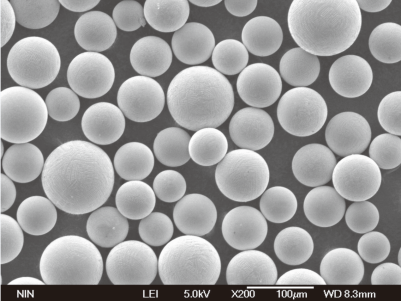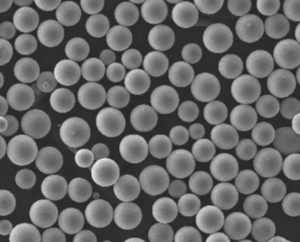When it comes to high-performance alloys, few materials can match the exceptional capabilities of Inconel 939 Powder. This versatile metal powder is part of the nickel-based superalloy family and is renowned for its outstanding resistance to heat, oxidation, and corrosion. Inconel 939 Powder plays a critical role in industries where extreme environmental conditions are a constant, such as aerospace, power generation, and automotive. But what makes it so special? Let’s dive deep into the world of Inconel 939 Powder to understand its composition, properties, applications, and more.

Overview of Inconel 939 Powder
Inconel 939 is a precipitation-hardened nickel-chromium alloy developed for applications demanding resistance to high temperatures and corrosion. This superalloy is unique due to its high tensile strength, excellent thermal stability, and ability to withstand oxidation at temperatures of up to 900°C. But it doesn’t stop there. The powder form of Inconel 939 allows for more flexibility in applications, particularly in additive manufacturing and 3D printing, where the demand for high-performance materials is steadily increasing.
Key Features of Inconel 939 Powder
- High Temperature Resistance: Capable of performing at elevated temperatures without losing strength.
- Corrosion and Oxidation Resistance: Protects components from harsh environments, reducing maintenance costs.
- Durability: Inconel 939 retains its mechanical properties over long periods, even under stress and heat.
- Weldability: Excellent compatibility with various manufacturing techniques, including welding and 3D printing.
Now that we’ve scratched the surface, let’s explore more details about its specific composition, properties, applications, and characteristics.
Composition of Inconel 939 Powder
At the heart of what makes Inconel 939 special is its composition. Comprising a balance of nickel, chromium, and other elements like titanium and molybdenum, this alloy is fine-tuned for optimal performance in extreme environments.
Composition Breakdown
| Element | Percentage |
|---|---|
| Nickel (Ni) | 47-51% |
| Chromium (Cr) | 18-23% |
| Cobalt (Co) | 17-21% |
| Molybdenum (Mo) | 1.2-2% |
| Titanium (Ti) | 2-3% |
| Aluminum (Al) | 1-1.5% |
| Carbon (C) | ≤ 0.10% |
| Boron (B) | ≤ 0.006% |
How the Composition Enhances Performance
- Nickel and Chromium provide excellent resistance to oxidation and corrosion.
- Cobalt enhances high-temperature performance, while Molybdenum offers added strength and creep resistance.
- Titanium and Aluminum contribute to precipitation hardening, significantly boosting the alloy’s strength.
- The low levels of Carbon and Boron help improve ductility without compromising its thermal stability.
Properties of Inconel 939 Powder
Understanding the properties of Inconel 939 Powder is key to seeing why it’s favored in critical, high-stress applications. This alloy is designed to maintain mechanical integrity even in the harshest environments.
Physical and Mechanical Properties
| Property | Value |
|---|---|
| Melting Point | 1350°C – 1375°C |
| Density | 8.0 g/cm³ |
| Tensile Strength | 950 MPa |
| Yield Strength | 650 MPa |
| Thermal Conductivity | 14 W/m·K at 900°C |
| Oxidation Resistance | Excellent up to 900°C |
| Elongation at Break | 18-25% |
| Hardness | 220-240 HB |
Characteristics That Stand Out
- Thermal Conductivity: While Inconel 939 is primarily prized for resisting heat, it also has decent thermal conductivity, allowing it to maintain stability without warping or cracking.
- High Tensile Strength: This material can endure significant amounts of stress before deforming, making it a go-to material for turbine blades and other critical components.
- Elongation and Ductility: Despite its strength, Inconel 939 can still undergo significant elongation without breaking, which is ideal for applications requiring flexibility.






Characteristics of Inconel 939 Powder
Inconel 939 Powder has a unique combination of traits that make it indispensable in many industries. Let’s take a look at some of its defining characteristics in more detail.
Key Characteristics
- Exceptional Heat Resistance: With a melting point above 1300°C, Inconel 939 is designed for high-temperature applications where other metals would fail.
- Corrosion Resistance: This alloy forms a protective oxide layer, which helps it resist corrosion even in environments laden with salts, acids, or seawater.
- Precipitation Hardening: Through heat treatment, Inconel 939 achieves remarkable hardness and durability, making it ideal for high-stress components like turbine blades and aerospace fasteners.
- Versatility in Powder Form: In powder form, it is ideal for additive manufacturing techniques like 3D printing, where precision and performance are crucial.
Applications of Inconel 939 Powder
Now that we’ve covered the composition and properties, let’s discuss where Inconel 939 Powder really shines — its applications. Inconel 939 is trusted in some of the most demanding fields due to its ability to handle intense conditions.
Industrial Applications
| Industry | Use Case | Why Inconel 939? |
|---|---|---|
| Aerospace | Turbine blades, exhaust systems | Heat resistance, fatigue resistance |
| Power Generation | Gas turbines, steam turbines | Long service life, thermal stability |
| Automotive | Exhaust valves, turbocharger rotors | Oxidation and heat resistance |
| Petrochemical | Heat exchangers, pressure vessels | Corrosion resistance, thermal cycling capabilities |
| Additive Manufacturing | 3D printing for complex parts | Precision, excellent post-processing properties |
| Industrial Furnaces | Heating elements, components | Ability to withstand extreme temperatures |
| Marine Engineering | Pump shafts, propellers | Corrosion resistance to seawater |
Why Is It a Game-Changer in These Industries?
In industries like aerospace and power generation, equipment often operates at the edge of material limits — high speeds, extreme temperatures, and corrosive environments are the norm. Inconel 939 doesn’t just survive in these conditions; it thrives. That’s why you’ll find it in turbine blades, exhaust systems, and pressure vessels.
Advantages of Inconel 939 Powder
Inconel 939 has earned its place among high-performance alloys due to its many advantages. Let’s highlight some of the key benefits that make it a preferred choice for critical applications.
Top Advantages
- High-Temperature Strength: Able to maintain mechanical integrity at temperatures exceeding 900°C, Inconel 939 outperforms most other alloys in this regard.
- Oxidation Resistance: Protects against environmental degradation, extending the life of components and reducing the frequency of repairs.
- Corrosion Resistance: Handles exposure to various corrosive environments, including salt, steam, and gases.
- Durability: Known for its ability to withstand long-term stress without significant wear or damage.
- Powder Form Advantages: Ideal for advanced manufacturing methods, especially 3D printing, where complex geometries and fine detailing are required.
Inconel 939 Powder Models
There are several specific models of Inconel 939 Powder available, each designed with different applications in mind. Let’s take a look at some of the key models:
Notable Inconel 939 Powder Models
| Model Name | Composition | Applications |
|---|---|---|
| Inconel 939 AM Powder | Standard Inconel 939 composition | Additive manufacturing for aerospace parts |
| Inconel 939 EBM Powder | Electron Beam Melting (EBM) optimized | EBM 3D printing, precision turbine components |
| Inconel 939 L-PBF Powder | Laser-Powder Bed Fusion (L-PBF) compatible | 3D printed automotive and aerospace components |
| Inconel 939 GAS Atomized | Gas atomization for higher purity | Medical implants, high-purity applications |
| Inconel 939 Spray Forming | Spray forming application | Gas turbine rotors, heavy-duty power generation parts |
| Inconel 939 HIP Processed | Hot isostatic pressing | High-strength parts requiring void-free structure |
| Inconel 939 Fine Grade | Fine powder granulation | High-precision parts requiring intricate detailing |
| Inconel 939 Coarse Grade | Coarse powder granulation | Large components with moderate surface finish requirements |
| Inconel 939 Pre-alloyed Powder | Pre-alloyed powder for consistency | Consistency in manufacturing processes |
| Inconel 939 PM (Powder Metallurgy) | Powder Metallurgy version | Structural aerospace components and gas turbines |
Each model has slight variations in its formulation or manufacturing process to meet the specific needs of different applications.
Specifications and Grades of Inconel 939 Powder
When selecting Inconel 939 Powder for your project, it’s essential to understand the specifications and grades available. Here’s a guide to the commonly available grades and their corresponding standards.
Specifications and Standards
| Specification/Standard | Details |
|---|---|
| AMS 5393 | Covers alloy composition and powder processing |
| UNS N09319 | Defines the chemical composition of Inconel 939 |
| ASTM B637 | Outlines the mechanical properties of Inconel 939 |
| ISO 6208 | Specifies the powder granulation size standards |
| DIN 17744 | European specification for heat-resistant alloys |
Pros and Cons of Inconel 939 Powder
Like all materials, Inconel 939 Powder has its strengths and weaknesses. Here’s a breakdown:
Advantages
| Advantage | Why It Matters |
|---|---|
| High-temperature resistance | Ideal for extreme applications like gas turbines |
| Oxidation and corrosion resistance | Long-term durability in harsh environments |
| Compatibility with 3D printing | Offers precision and flexibility in additive manufacturing |
| Long service life | Reduced maintenance costs over time |
Disadvantages
| Disadvantage | Why It Could Be a Concern |
|---|---|
| Cost | More expensive compared to traditional alloys |
| Machinability | More difficult to machine compared to softer materials |
| Brittleness at low temperatures | May be less effective in cryogenic applications |

Suppliers and Pricing of Inconel 939 Powder
There are several key suppliers of Inconel 939 Powder, each offering slightly different formulations or models for various industries.
Supplier Information
| Supplier Name | Region | Price (Per Kg) | Shipping Time |
|---|---|---|---|
| Carpenter Technology | USA | $450 – $600 | 4-6 weeks |
| Sandvik Materials Technology | Europe | $400 – $550 | 3-5 weeks |
| Kennametal Inc. | Global | $425 – $600 | 4-7 weeks |
| Additive Manufacturing Ltd. | Asia | $470 – $620 | 5-8 weeks |
| ATI Metals | Global | $450 – $580 | 3-6 weeks |
Prices can vary based on the specific model, quantity, and shipping location.
FAQ
| Question | Answer |
|---|---|
| What industries typically use Inconel 939 Powder? | Aerospace, power generation, automotive, and petrochemical. |
| What makes Inconel 939 Powder ideal for 3D printing? | Its heat resistance and durability make it perfect for precision parts. |
| Can Inconel 939 be welded? | Yes, it is highly weldable and compatible with various manufacturing techniques. |
| How does it compare to other superalloys? | Inconel 939 offers superior performance in high-temperature environments. |
| What’s the difference between Inconel 939 and Inconel 718? | Inconel 939 has better thermal stability but is more expensive than Inconel 718. |
Conclusion
Inconel 939 Powder is a remarkable material, offering the perfect blend of strength, heat resistance, and durability. Its applications in aerospace, power generation, and advanced manufacturing demonstrate its versatility and capability in demanding environments. Whether you’re looking to produce high-performance turbine blades or precision parts for 3D printing, Inconel 939 Powder is an excellent choice to consider. While it may come at a premium price, its long service life and performance under extreme conditions make it worth the investment.

